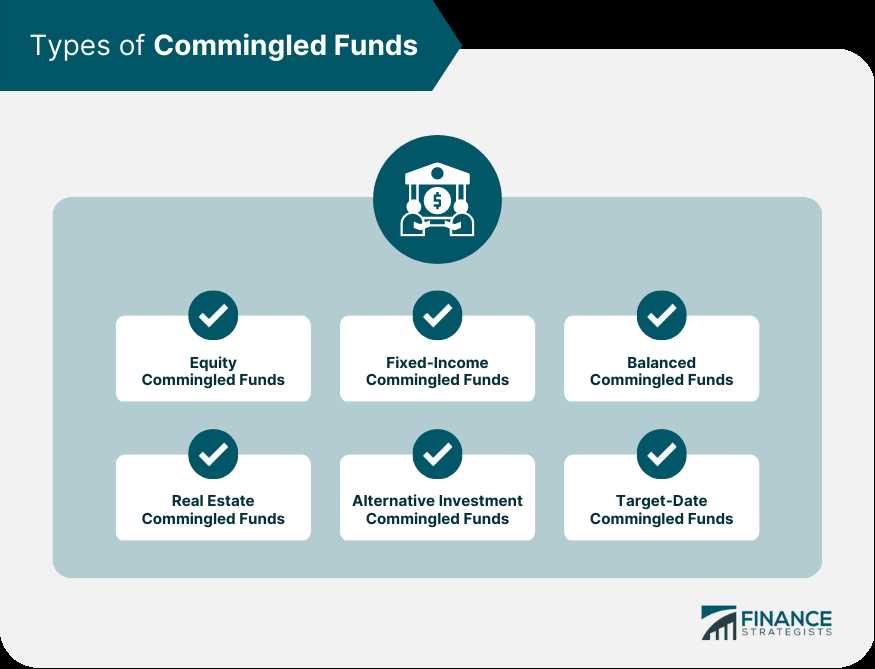Commingled Fund: Definition, Purpose, Working Mechanism, and Example
A commingled fund is a type of investment fund that pools together funds from multiple investors to create a diversified portfolio. It is typically managed by a professional investment manager or a team of managers who make investment decisions on behalf of the fund.
The purpose of a commingled fund is to provide investors with access to a wide range of investment opportunities and to achieve economies of scale. By pooling together funds from multiple investors, the fund can invest in a larger number of securities and assets, which helps to spread risk and potentially increase returns.
The working mechanism of a commingled fund involves the pooling of funds from multiple investors into a single investment vehicle. The fund manager then uses these pooled funds to invest in a diversified portfolio of stocks, bonds, and other securities. The returns generated by the investments are distributed among the investors in proportion to their investment in the fund.
For example, let’s say a commingled fund has $100 million in assets under management and has 1,000 investors. Each investor has contributed $100,000 to the fund. The fund manager uses these pooled funds to invest in a diversified portfolio of stocks and bonds. If the fund generates a return of 10% in a year, each investor would receive a return of $10,000 (10% of $100,000) on their investment.
What is a Commingled Fund?

A commingled fund is a type of investment fund where multiple investors pool their money together to create a single fund. This fund is managed by a professional investment manager who makes investment decisions on behalf of the investors.
Commingled funds are typically offered by financial institutions such as banks, insurance companies, or investment firms. They are often used as investment vehicles for institutional investors, such as pension funds or endowments, but can also be available to individual investors.
Commingled funds offer investors the opportunity to diversify their investments across a wide range of assets, such as stocks, bonds, or real estate. By pooling their money together, investors can access a larger and more diverse portfolio than they would be able to achieve on their own.
One of the key benefits of a commingled fund is that it allows investors to benefit from economies of scale. By pooling their money together, investors can take advantage of lower transaction costs and fees, as well as access to investment opportunities that may not be available to individual investors.
Overall, a commingled fund provides investors with a convenient and cost-effective way to access a diversified portfolio of investments. It offers the potential for higher returns and reduced risk compared to investing in individual securities.
Purpose of a Commingled Fund

A commingled fund serves several important purposes for investors. The primary purpose is to provide diversification and risk management. By pooling together the investments of multiple investors, a commingled fund can spread the risk across a variety of assets and investment strategies. This helps to reduce the impact of any single investment on the overall performance of the fund.
Another purpose of a commingled fund is to provide access to professional investment management. Many investors do not have the time, expertise, or resources to effectively manage their own investments. By investing in a commingled fund, they can benefit from the expertise of professional fund managers who have the knowledge and experience to make informed investment decisions.
Additionally, a commingled fund can offer cost savings to investors. By pooling together assets, the fund can achieve economies of scale, which can result in lower investment management fees and expenses. This can be particularly beneficial for individual investors who may not have access to the same level of cost savings on their own.
Furthermore, a commingled fund can provide liquidity to investors. Unlike individual investments, which may be illiquid and difficult to sell, a commingled fund typically offers daily or periodic liquidity. This means that investors can easily buy or sell their shares in the fund, providing them with flexibility and access to their investment capital.
Lastly, a commingled fund can serve as a vehicle for institutional investors, such as pension funds or endowments, to pool their assets together for investment purposes. This allows these large investors to benefit from the advantages of diversification, professional management, cost savings, and liquidity that a commingled fund offers.
| Purpose of a Commingled Fund: |
|---|
| – Diversification and risk management |
| – Access to professional investment management |
| – Cost savings |
| – Liquidity |
| – Vehicle for institutional investors |
Working Mechanism of a Commingled Fund
A commingled fund operates by pooling together the investments of multiple investors into a single investment vehicle. This allows individual investors to benefit from economies of scale and access to a diversified portfolio of assets that may not be available to them individually.
When investors contribute funds to a commingled fund, their investments are combined with those of other investors. The fund manager then uses these pooled funds to invest in a variety of assets, such as stocks, bonds, and other securities, based on the fund’s investment objectives and strategy.
The fund manager is responsible for making investment decisions on behalf of the fund and managing the portfolio of assets. They may employ various investment strategies, such as active management or passive indexing, to achieve the fund’s investment goals.
Investors in a commingled fund typically own shares or units of the fund, which represent their proportionate ownership of the underlying assets. The value of these shares or units fluctuates based on the performance of the fund’s investments.
Commingled funds often provide investors with regular reports and updates on the fund’s performance, including information on the composition of the portfolio, investment returns, and fees and expenses. Investors may also have the option to redeem their shares or units in the fund, subject to any restrictions or penalties outlined in the fund’s terms and conditions.
Overall, the working mechanism of a commingled fund offers investors a convenient and cost-effective way to access professional investment management and diversification in a single investment vehicle.
Example of a Commingled Fund
Let’s consider an example to better understand how a commingled fund works. Imagine a group of investors who want to invest in the stock market but do not have enough capital individually to create a diversified portfolio. They decide to pool their money together and invest in a commingled fund.
The commingled fund is managed by a professional fund manager who has expertise in selecting and managing a portfolio of stocks. The fund manager carefully selects a mix of stocks from different industries and sectors to ensure diversification and reduce risk.
For example, the commingled fund may invest in stocks from technology, healthcare, finance, and consumer goods sectors. By investing in a variety of stocks, the fund aims to achieve a balance between potential returns and risk mitigation.
Investors in the commingled fund receive units or shares based on their investment amount. The value of these units or shares is determined by the performance of the underlying stocks in the fund’s portfolio. If the value of the stocks increases, the value of the units or shares also increases, and vice versa.
Investors can buy or sell units or shares of the commingled fund based on their investment objectives. They can choose to hold onto their units for the long term or sell them if they need to liquidate their investment.
One of the advantages of investing in a commingled fund is the ability to access a diversified portfolio with a relatively small investment amount. It allows individual investors to benefit from professional management and diversification that would otherwise be difficult to achieve on their own.

Emily Bibb simplifies finance through bestselling books and articles, bridging complex concepts for everyday understanding. Engaging audiences via social media, she shares insights for financial success. Active in seminars and philanthropy, Bibb aims to create a more financially informed society, driven by her passion for empowering others.
